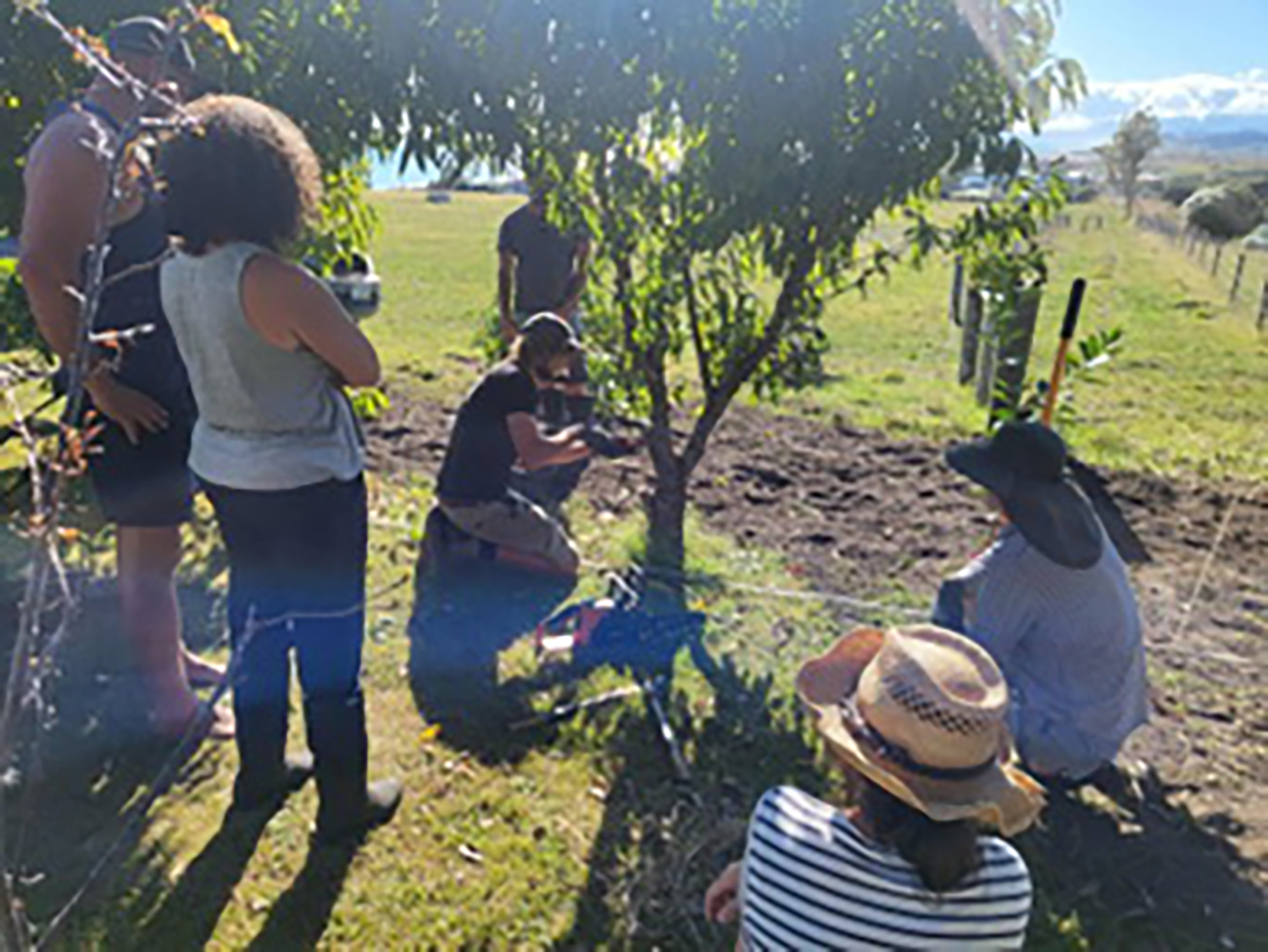Opinion: Growing kai and community

DIGGING IN: Pruning and planting a food forest, and kumara delights, below. Photos supplied
.
■ Community gardening is growing food, friendships and wellbeing, writes Tanja Rother
There is a framed pamphlet hanging above my desk that shows a clown holding a globe. The flyer promotes a theatre play based on Voltaire’s most popular novel, Candide, or the optimist, published in France in 1756.
Candide is the story of a gentleman who, though slapped in every direction by fate, clings desperately to the belief that he lives in the best of all possible worlds.
But then Candide travels around the world to discover that all is not always for the best. In the satiric novel, French philosopher Voltaire points towards a blind, indifferent universe full of needless cruelty, intolerance and chaos – a world without hope.
However, the novel does not end in despair. At the end of his travels Candide meets an old man sitting under a tree, resting from his day’s work in the garden.
The novel ends in its most famous line: “Il faut cultiver son jardin”, “One must cultivate one’s own garden”.
Although Voltaire encouraged people to grow their own gardens, and cope with the world’s challenges in this way, he also strongly supported community spirit and connectedness.
Fast forward into the 21st century and around the world to Ōpōtiki, Eastern Bay of Plenty, Te Pātaka kai a Toi is a non-for-profit project focusing on connection, regenerative practices, mātauranga Māori kai (Māori knowledge systems around growing and gathering food) and community engagement.
I am very fortunate to be part of this collaborative space that involves a diverse group of gardeners from Ōpōtiki along the coast to Pōtaka.
Lauren Haynes, who has organised Te Pātaka Kai a Toi for over a year along with principal tutor Lennart Prinz, believes: “The world would be a different place if everyone grew kai (food). Growing your own kai is Mana Motuhake – it means having autonomy over your hauora (health), strengthening your connection with Papatūānuku (earth mother) and te taiao (the environment), and it also sharpens ones focus on the current food system and economy.”
Te Pātaka Kai a Toi, funded by Health NZ and administered by Te Ao Hau Trust, just entered its second year holding wānanga and offering a mentoring programme, all free of charge.
The mentoring programme has shown to be very successful.

It keeps new gardeners in their gardens, as Lauren says, “they get the korowai (cloak) wrapped around them and they get to troubleshoot within their own environment”.
Equally important are the hāpori days where everyone comes together. From making seed raising mix from scratch to planting someone’s food forest the communal activities range and depend on the Maramataka, the Māori Lunar calendar, that guides all activities of Te Pātaka Kai o Toi.
In early spring the focus was on growing kūmara from the tipu (the shoots) up.
In between the sessions participants maintain a lively chat on social media, exchanging ideas, seeds and seedlings.
Funding is limited of course, but it looks as though this is a growing network of gardeners building local food resilience, deepening mātauranga, and strengthening inter-regional relationships through seasonal trade.
The project welcomes new members, especially for its wānanga or hāpori days. Email Lauren at [email protected] for more information.
Apparently, following Trump’s election victory late last year, more people than ever inquired about membership at Capital Roots, a non-profit organisation that runs 55 community gardens around the New York region.
Whether in 18th century France, Ōpōtiki or New York in the 21st century, we can counter the world’s disarray through gardening together.
Local initiatives such as Te Pātaka Kai a Toi (or Kai Rotorua or Hughes Place Garden Project, Tāneatua) require our participation and support.
n Tanja Rother is a local independent historian and writer.
Email: [email protected]